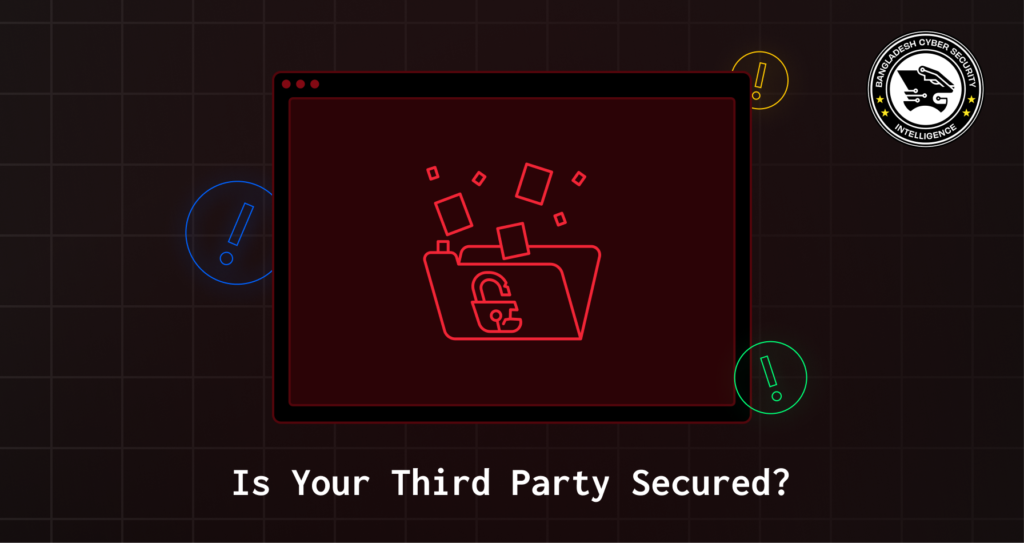
We all prioritize cybersecurity. We implement firewalls, strong passwords, and employee training. But what about the third-party vendors, suppliers, and partners we entrust with our data? A robust internal security posture can be rendered useless if a third-party link in your system is compromised.
Why Third-Party Security Matters
Third-party cybersecurity breaches are on the rise, significantly affecting organizations across various industries. Nearly one-third of breaches in 2023 involved third-party components, with the technology, healthcare, and financial services sectors being particularly vulnerable due to their extensive vendor relationships. A significant portion of these breaches are linked to technical vendors, such as software and IT services, highlighting the risks of the software supply chain. Reports from SecurityScorecard and Prevalent reveal that 41% of companies experienced a third-party breach, and 71% consider it a top concern. Financial losses from such breaches can be substantial, emphasizing the need for robust third-party risk management practices
- Financial Losses: Data breaches can cost companies millions in recovery efforts, regulatory fines, and lost business.
- Reputational Damage: Public trust is hard-earned and easily shattered. A third-party breach can erode your customer confidence.
- Compliance Issues: Depending on the industry and data types involved, regulations like GDPR and HIPAA may impose hefty fines for breaches.
Examples of Third-Party Breaches:
TAPPWARE Solutions Limited, Bangladesh Database Compromise
On May 1st, 2024, Tappware experienced a significant data breach where 34GB of data, including names, addresses, and phone numbers, was leaked on a hacker forum. The breach, discovered on April 23rd, 2024, exposed 2.3 million rows of sensitive information.
The company has completed several project of government such as, e-nothi, AMMAS 2.0(Audit MOnitoring and Management System), SEO Service for National Portal of a2i, SEIP (Skill for Employment Investment Program), National Portal of a2i, D-Nothi (Digital File Management system) used by 10000+ government offices, Audit Archiving, Virtual Court, RMS, SEIP MiniERP.
NotPetya Ransomware attack (the Most Devastating Cyber Attack in History)
NotPetya ransomware effect on Ukraine.
Hackers infiltrated the update server of M.E.Doc, a popular Ukrainian accounting software. They disguised malicious code as a genuine update, infecting unsuspecting users who installed it. These vulnerabilities stemmed from outdated servers, neglected since 2013.
This incident, known as NotPetya, began on June 27, 2017, as a large-scale cyberattack. Initially targeting Ukraine, it quickly spread globally. NotPetya exploited weaknesses in Windows systems, mimicking ransomware by encrypting data and demanding Bitcoin payments. However, its true purpose was destruction, not financial gain. Businesses and critical infrastructure suffered tremendously, resulting in 10 billions of dollars in losses globally. Major companies like Maersk, FedEx, and Merck were significantly impacted. While the attack is widely believed to be the work of a group backed by the Russian government, Russia has denied any involvement.
Securing Your Third-Party Ecosystem
Here’s what you can do to mitigate third-party cyber risks:
- Thoroughly Evaluate Third-Party Vendors: Before engaging with a vendor, assess their cybersecurity posture. Request security questionnaires, penetration testing reports, and inquire about their data security practices.
- Contractual Obligations: Include strong security clauses in your contracts with third parties. These clauses should outline data security protocols, incident response procedures, and audit rights.
- Continuous Monitoring: Don’t rely on a one-time assessment. Regularly monitor the security posture of your third-party vendors through security ratings platforms or penetration testing.
- Data Minimization: Share only the minimum amount of data necessary with third parties. The less data they have, the less is exposed in a potential breach.
- Educate Employees: Train your employees to be vigilant about potential phishing attempts or social engineering scams that might target them through third-party interactions.
Conclusion
In this interconnected business world, securing your internal systems is only half the battle. The other half involves ensuring that your third-party vendors, suppliers, and partners maintain strong cybersecurity measures. The increase in third-party breaches highlights the importance of extending your security practices beyond your organization. By thoroughly Evaluating Third-Party Vendors, incorporating stringent contractual obligations, continuously monitoring vendor security, minimizing data sharing, and educating employees, you can significantly reduce the risk of third-party breaches. Proactively managing these relationships and their associated risks is essential for safeguarding your data, protecting your reputation, and complying with regulatory requirements. Remember, your security is only as strong as your weakest link—ensure your third-party vendors are secure to maintain a robust cybersecurity posture.


